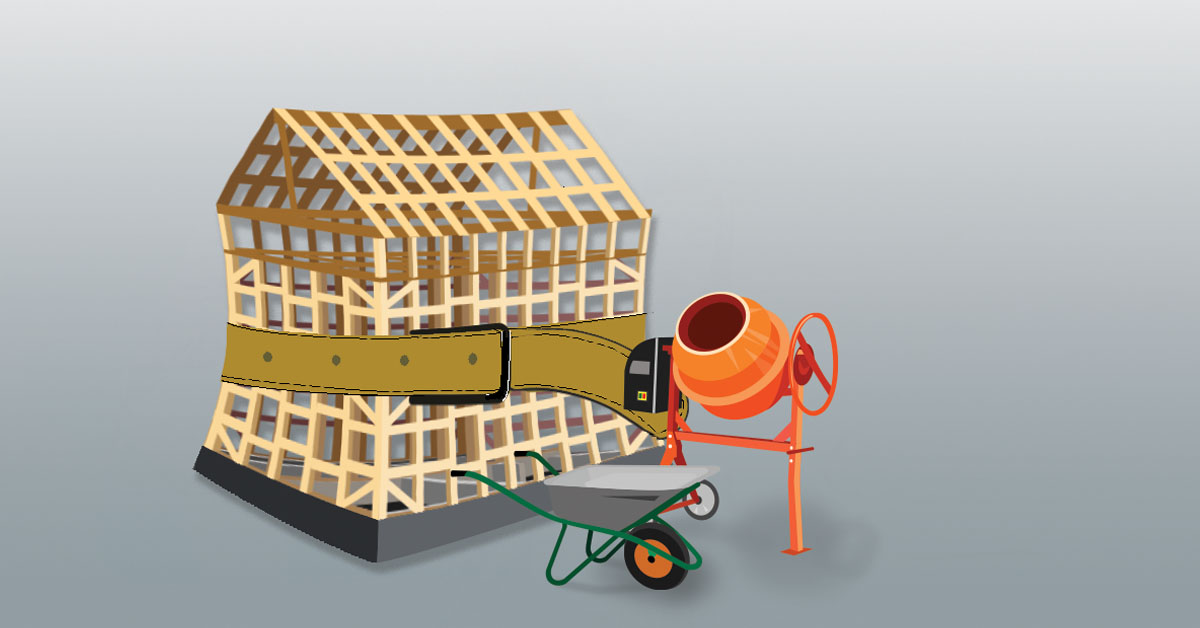For many years, it has been widely reported that the U.S. isn’t building enough homes to meet buyer demand and that the cost of construction materials is a major factor that contributes to the production lag. The good news is that one of the largest costs in home construction — softwood lumber — saw a sizable drop in prices this past summer.
Does this mean the issue is solved? Far from it, according to the National Association of Home Builders. “It is a real problem,” says David Logan, the association’s director of tax and trade analysis.
It is true that lumber prices fell significantly earlier this year after surging during lockdowns tied to the COVID-19 pandemic. According to the U.S. Bureau of Labor Statistics’ Producer Price Index, the cost of softwood lumber fell by 29% from June to July.
The problem is, lumber costs were still more than 70% higher at this time than they were before the pandemic. Other materials, such as steel, gypsum products and ready-mix concrete, also have seen prices go up substantially. Steel-mill products have seen the most dramatic rise, climbing nearly 11% in July alone and more than doubling (up 109%) over the previous 12 months. Despite the drop in lumber prices, the aggregate cost of all construction materials was up 19% in the 12-month period ending in July and was 13% higher on a year-over-year basis during the first seven months of 2021, according to labor department data.
It is the craziest time I have ever seen.
Steve Booz, vice president of marketing, Royal Building Products
Logan says the bottom line is that high material costs remain a factor in delaying the production of homes. He also notes that the drop in lumber prices represents only the wholesale price. The actual savings passed on to the consumer is lower. As evidence that builders are delaying projects, Logan points to U.S. Census Bureau data showing that single-family homes that were issued permits but not started were up 56% year over year this past July.
“Builders are having to delay projects and calling intermittent delays because they can’t get materials or they can’t afford material prices,” Logan says. “They need to wait for them to come down. You can see it in the data.”
He also believes prices are likely to keep rising for some time, given the demand for new homes and renovations. As of July 2021, single-family housing starts were up nearly 12% year over year to a seasonally adjusted annual rate of 1.1 million.
“I see strong housing-demand fundamentals that preexisted the pandemic,” Logan says. “And then you have the effects of the pandemic that have served to buoy demand. Buyers are wanting more space in areas further away from the city core.”
This, combined with ongoing construction-labor shortages and an expected rise in inflation, is projected to continue to put a squeeze on the industry. This is true not only for the home-construction companies that buy these products but suppliers that manufacture siding, drywall and other finished building products sourced from raw materials.
Royal Building Products, which makes vinyl and composite siding, has been forced to raise its prices by about 20% due to the rising cost of PVC and additional labor costs, says Steve Booz, the company’s vice president of marketing. He says he doesn’t see an easy fix to the problem. He noted that his company’s supply chains have been affected in various ways by the pandemic as well as by unrelated plant shutdowns and natural disasters.
“We are mostly a plastic-space company and we see price appreciation every month, and so it just forces us to continue to go up,” Booz says. “This is not to mention our labor prices are up. We have a labor shortage and we are trying to attract talented people. Packaging costs are up with lumber and cardboard. It is the craziest time I have ever seen.”
Craig Ricks Jr., president of Acadian Windows and Siding, a home-construction company in Louisiana, says that building costs have been rising for two key reasons. One, lockdowns created more demand for these materials. Two, the closure of the Canadian border put pressure on supply.
He says there was a boom in do-it-yourself home renovations, ramping up demand for everything from sheetrock screws to deck boards. There also is an ongoing trade dispute with Canada that could, if left unresolved, limit supplies that cross the border and cause lumber prices to rise again, particularly in northern states that are more dependent on Canadian raw materials. This past May, the Biden administration took steps to double the tariff on softwood lumber.
“A significant proportion of the studs and beams used to build and renovate American homes comes from Canada,” Ricks says, “and this supply was essentially cut off overnight, with supply limited to a small trickle of homegrown wood supplies.” ●





